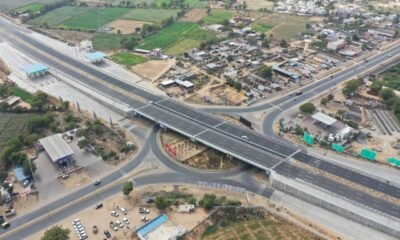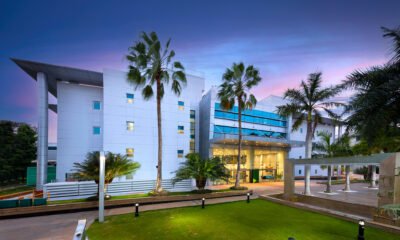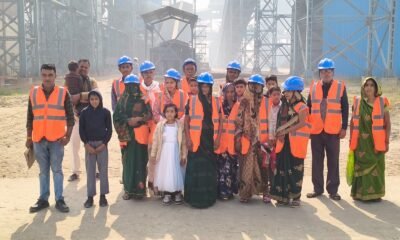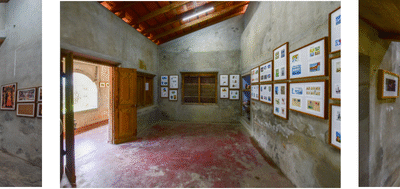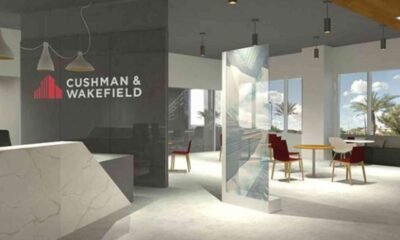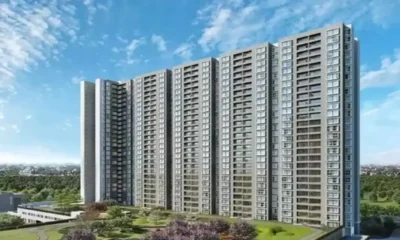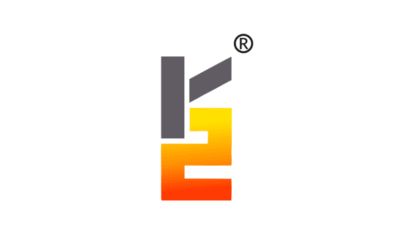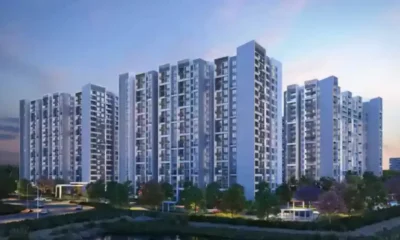News
‘Office Fit-Out Costs Rise Amid Demand For Premium, Tech-Enabled & Sustainable Workspaces’

Gurugram, March 19, 2025: The average office fit out costs continue to rise in 2024, with Mumbai leading as the most expensive market at $73 per sq ft, followed by Delhi at $69 per sq ft, according to Cushman & Wakefield’s latest Fit-Out Cost Guide. Among the other top eight cities, Bengaluru follows at $67 per sq ft, while Ahmedabad, Chennai, Hyderabad, Kolkata and Pune stand at $65 per sq ft.
Cushman & Wakefield’s Fit Out Cost Guide is an annual publication providing cost breakdowns for office fit outs, refurbishments and reinstatements for 33 key office markets across the region. According to the report, while India recorded a steady 3 per cent rise in fit-out cost across top eight cities, it continues to remain one of the most cost-effective office-fit-out destinations in the Asia Pacific (APAC) region, making it an attractive market for businesses expanding their workplaces.
The report also observes that while project costs have seen only a marginal increase, companies are spending more per square foot to create people centric, tech-enabled and sustainable work environments for their employees. Occupiers are also prioritising high-quality workspaces that enhance employee experience, promote well-being and align with global design and sustainability standards.
A surge is evident across metro markets, with multinational corporations and domestic firms investing in modern office environments to attract top talent and reflect brand identity. Additionally, wellness-focused designs—featuring biophilic elements, ergonomic spaces, and enhanced air quality systems—are becoming integral to workplace planning.
Startups and SMEs, which often lack the bandwidth or expertise to manage custom fit-outs, are increasingly opting for ready-to-move-in, plug-and-play, co-working, and builder-fitted spaces. This demand for adaptable and technology-integrated workspaces is accelerating the shift toward hybrid office models and flexible workspaces that foster collaboration.
The push for sustainability has also become a major focus, with many office developments targeting LEED and IGBC certifications and integrating energy-efficient solutions to reduce operational costs and meet evolving tenant expectations.

Commenting on the report, Shashi Bushan, Managing Director, Project and Development Services, said, “While fit-out costs have seen only a marginal increase YOY, the overall cost of office spaces has risen due to premiumisation. Occupiers—especially Global Capability Centers (GCCs)—are investing more in creating high-quality work environments that prioritize wellness, technology, and sustainability. From biophilic designs and advanced air filtration systems to smart, tech-enabled workspaces, businesses are focusing on employee well-being and productivity. This shift reflects a growing demand for modern, future-ready offices that enhance workplace experience and align with evolving global standards.”
He added, “Despite global cost fluctuations, India’s affordability and evolving workplace design trends continue to reinforce its position as a key market for corporate occupiers. The demand for high-quality office environments, coupled with a strong supply pipeline, is expected to drive sustained growth in office fit-outs over the coming years.”
APAC Insights
According to the report, Tokyo continues to be the most expensive city in APAC for office fit-outs, with costs reaching $195 per sq. ft., while Jakarta remains the most affordable at $58 per sq ft. North Asian cities, including Tokyo, Seoul, and Osaka, saw the highest cost inflation at 16 per cent, while Australian cities averaged 11 per cent.

Report author and Head of International Research, EMEA & APAC, Dominic Brown said, changes to local fit-out costs were largely aligned with the economic outlook of each market and the related office leasing activity. “As a region, Asia Pacific is one of the more expansionary, and we have seen more growth and slightly more positive sentiment about the market by contractors here than in other regions.”
“Measured by both contractor sentiment and actual cost, it appears that the worst of the pricing pressure from recent years has resolved and prices for raw materials are on the way down, while tight labour markets continue to drive some wage inflation,” he added.

 News2 weeks ago
News2 weeks agoInfrastructure Automation Company Enlite Launches World’s First Patented Edge Controller for Intelligent Infrastructure

 News2 weeks ago
News2 weeks agoIshara Art Foundation to Present Group Exhibition ‘Amphibian Aesthetics’ at Ishara House in Kochi

 News2 weeks ago
News2 weeks agoGodrej Properties Crosses FY26 Annual Business Development Guidance with Acquisition of 75-acre land parcel in Nagpur

 News3 weeks ago
News3 weeks agoMumbai Returns to Pre-Pandemic Investment Levels, Surpasses $1 Billion 4th Consecutive Year: Cushman & Wakefield

 News3 weeks ago
News3 weeks agoGurugram Premium Segment Drives Projected Rs 6.65 Lakh Crore Market: ANAROCK

 News2 weeks ago
News2 weeks agoReal Estate Investment Momentum in APAC, India to Hold Steady Through 2026: Colliers’ Survey Insights

 News2 weeks ago
News2 weeks agoK2 Infragen Delivers Robust H1 with 76.5% Revenue Growth, 70% Profit Jump

 News2 weeks ago
News2 weeks agoSumadhura Group Unveils Sustainable Urban Roadway in East Bengaluru Designed to Serve over 5,000 Families


